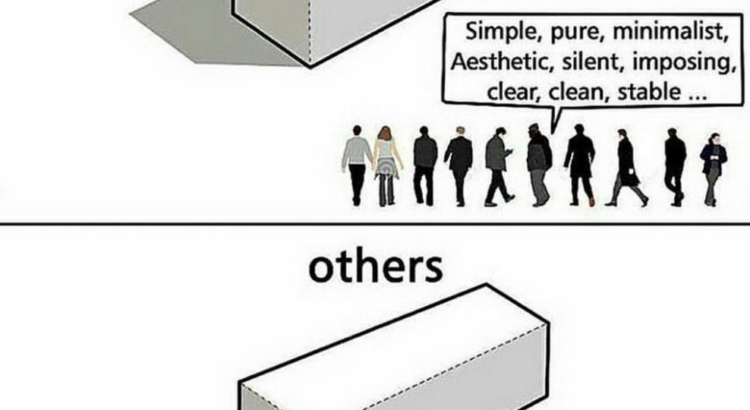
Hi Everyone!
I’m back again, this week, to share some of my experiences as an architecture student here, at the University of Michigan’s Taubman School of Architecture and Urban Planning!
This week, the topic is introductions.
Yes, introductions…. like, Hi, my name is ____, I major in ____, how about you?
Ever since I started college here, I’d always say that line above, with “architecture” in place of the blank, and I’ve always gotten responses like OMG wow that’s SO cool! Is there a lot of math involved? or Wow that’s so cool, I remember when I was a kid, I thought architecture was so cool, and I used to want to become an architect too! And when I say always, I mean ALWAYS! I ALWAYS get such replies!
Ok, I get it, some people just say that since it’s a standard thing to say to express courteous interest in getting to know someone and their passion. But COME ON! I’ve gotten those responses, from mostly non-design majors, from at least A HUNDRED people now. To be fair, that’s a pretty small number in comparison to the total number of humans at Michigan. BUT, in architecture, which I find to be a very selective, niche field, that’s a huge number. I mean, maybe I just lived in a very sheltered environment as a child, but growing up, I was maybe aware of buildings, but I was probably only aware of architecture as a serious discipline by high school. There’s barely any architects in the world, in comparison to the number of people working in the other disciplines, so to me, when many people express that they “used to” want to be an architect, it’s kind of like the equivalent of saying “I used to like that flavor of soda.”
And then, the conversation would usually carry on to people asking me what kinds of classes I have to take (ahem, is math one of them?), where are my classes located, is it in LSA, if I enjoy them, and if they can see some of my work (which I’m happy to share with you!!).
So, as a first year (undergraduate), you will be taking mostly prerequisite classes, just like students of other majors, a “basic” drawing class (quotation marks because it was NOT basic to me, it was straight-up still-life drawing freehand, and some training to use design tools and training our eyes to recognize angles, and having a steady hand to draw straight lines without a T-square or erasure), along with a first year architectural seminar that started introducing some design terminology and attempted to teach us a first-pass way at reading building plans.
The second year, you may need to take a few more prerequisite courses, but you will be getting into some more introductory architectural courses, including introducing drafting (like scaled drawings) which naturally leads to first-pass at creating physical models in attempts to demonstrate specified concepts, and working with modeling materials and learning modeling techniques fit for ourselves. The semester after that, you’ll get introduced to virtual modeling software programs mainly Rhinoceros, along with the Adobe Creative Suite (mainly Photoshop and Illustrator), which leads right into learning how to use software along with our prior drafting knowledge to best represent our projects and their concepts.
Then comes the third year, where you’ll FINALLY get into a real studio- this is what people will usually refer to it as the weeder course of architecture, since you really put all of those design techniques and knowledge to use, and the curriculum of studio continues to pick up the pace, since you’re already expected to have learned and mostly mastered the skills you’ve picked up from the previous courses. I personally found the weeder course (it’s called UG1 and stands for undergraduate studio #1) intense, a ton of work, yet very rewarding, since I’d been itching to build models since my first day of freshman year! I’d also say that it really depends on who you get matched with for your instructor. I was lucky to have a really amazing instructor, Melissa Harris, who really helped me find my voice in representing architecture and what I liked or did not like to do, for my own modeling and representation methods. I definitely practically lived in my studio desk, I did my projects day-in, day-out, it was the center of my classes at the time. I’d get my other course work as quickly done as I could, as to make as much time as possible for studio. Of course, it was also my first time in such a setting, still learning what works and what doesn’t work for me.
But yes, time management has gotten better for me over time, and I am currently surviving my studio, and actually kind of enjoying my classes for once, since as a fourth year, you are required to take architecture electives along with a structures course (which is more like an applied-physics course), which I find I am really enjoying more than I expected! And if you’re a math-y student, you’re in luck, because you cannot ever fully escape physics or math, or even reading and writing for that matter. (Believe me, I’ve tried.)
********
So I’m curious, how many of you, (be honest please) have caught yourself responding in such a way when being introduced to a design student? And how many of you actually literally meant it? And if you did, what was your exposure to architecture like from your childhood, and what affected your collage career decisions in such a way that steered you away from architecture, or just any design-related field in general?
And if you’re a fellow architecture student, or another design major, or prospective student, let me know your thoughts! I’d love to hear your thoughts! Follow me on instagram @themichiganarchitect ! I’d love to see your work as well! :0
Thank you!
Stay tuned for more architecture with me next week! 🙂







